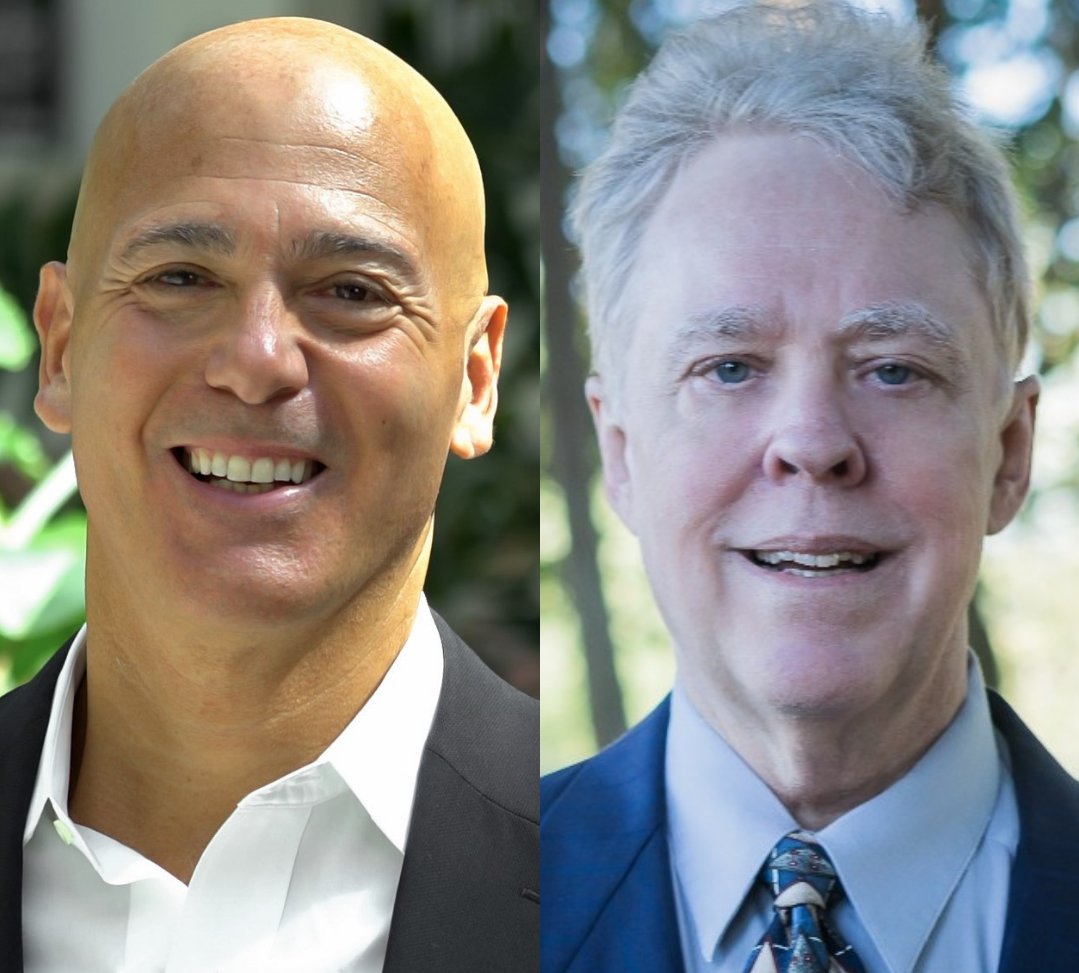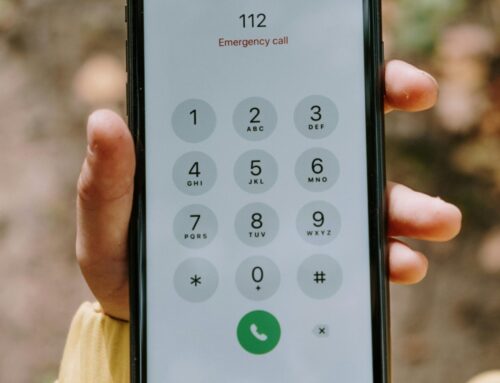
How we live–how we work–how we school–each has changed drastically since the pandemic.
Below is a summary conversation of a podcast between Vince Menzione and BrightArrow’s CEO, Raymond Bily, discussing the importance of having an adaptable and reliable mass notification solution in place to communicate effectively and keep constituents engaged. Learn how BrightArrow partners with technology organizations to deliver a complete solution for communicating during these transformational times.
Click HERE to hear the complete podcast.
Vince Menzione
Welcome to, or welcome back to The Ultimate Guide to Partnering, where technology leaders come to optimize results through successful partnering. I’m Vince Menzione, your host and my mission is to help leaders like you achieve your greatest business results by unlocking the leadership principles, best practices and learnings of the best in the business to help you get partnerships right, optimize for success and deliver your desired results during this time of intense transformation.
My guest for this episode of the podcast is Raymond Bily, CEO and founder of BrightArrow Technologies. I got to know Raymond while I was running the partner organization at Blackbaud, and BrightArrow was a rising star Partner of the Year. BrightArrow has been at the center of the digital transformation happening in K-12 Education and Learning, as it solutions have been used for notification and are now being deployed in many new use cases since the pandemic. I invited Raymond to share his rich and fascinating story, how BrightArrow partners with other technology organizations to deliver a complete solution to customers and why customers and partners choose to work with BrightArrow. I hope you enjoy this episode as much as I enjoyed spending time with Raymond Bily. Raymond, welcome to the podcast.
Raymond Bily
Thank you, Vince, it’s great to be here today.
Vince Menzione
It is so great to have you as a guest on Ultimate Guide to Partnering. You’re the CEO and founder of BrightArrow, and you and I have had the opportunity to work together both while I was at Blackbaud and now, so welcome. So for our listeners who might not know about BrightArrow, would you mind telling us a little bit about the company and its focus.
Raymond Bily
BrightArrow is a software company that’s focused on person-to-person communication. The idea is that we’re using technology to allow somebody to get messages out to other folks in a variety of ways. We can do automated voice calls, text messages, emails and social media posts and push notifications. With just one step, you can get your message out to whoever you need to immediately in whatever forms are appropriate for them. And we do that for many types of customers; probably our most common use is for schools, K-12 schools, because there are many, many points of communication that need to happen. But we’re a technology company that builds all the pieces and delivers it for that purpose.
Vince Menzione
And so when I think of K-12 schools, I think about schools I grew up in the northeast and think about snow days; that’s my thinking about the world, but tell us more about how that’s used.
Raymond Bily
Sure. Well, how it was used before the pandemic and after the pandemic, that’s changed. But before the pandemic the system was used certainly for emergencies, lockdowns and evacuations and those types of emergencies where you need to reach out to parents and staff instantly. Our system does that. It’s commonly used for purposes like attendance. If a student does not show up to school, it’s important that parents know for safety reasons, in addition to truancy reasons. And our system does that. Meal balance calls; most of our customers have Principals who send out messages on a weekly basis just to kind of let everybody know what’s going on. So it’s really important for engaging parents, and for involving teachers and staff by reminding them of things. Most of our customers use it every single day for a wide, wide variety of purposes.
Vince Menzione
And you mentioned COVID. So how has it changed since?
Raymond Bily
The usage of our system has probably tripled since March of last year and there are so many new ways that people are using it. First of all, there’s this constant decision process, even though it’s over a year later, there are still constantly decisions being made. And we’re getting customers calling or having policies about face masks or having policies about this and that and the other thing based on their state, based on their district, and they’re constantly having to let parents know of these things and remind them of tests and checking and COVID vaccines. There’s that constant flow of information. But there’s also a lot of new things that we’ve done for customers. For example, this past year, we’ve had a number of customers going back to school, but they needed to have COVID tracing. When a student was exposed to the virus, they needed to figure out through the database who all was exposed to that student so that they could all be quarantined and stay home for a few weeks; our system was designed to be able to expand to that kind of usage. So a lot of customers use it for that purpose of just basically keeping people engaged, whether it be schools, or churches, or nonprofits or other types of organizations, it’s a great tool to keep people engaged.
Vince Menzione
You know, it strikes me that you’re sort of at the center of this transformation we’ve been seeing over the last 14 months or so right? The technology is being deployed because our work and life and schooling have all changed drastically. We’ve gone through this time, like no other, and both schools and learning have greatly been impacted and have needed to radically shift. Can you tell our listeners how that’s impacted you a little bit more about how the technology is deployed there.
Raymond Bily
Certainly, it’s impacted our company because of the dramatic increase in usage and this really started last March. We beefed up our servers; we had a day on March 13 of last year where our usage was 1,000% of our peak usage any days prior to that. So we increased our capacity by over 10 times. And what that’s allowed us to do is open up the door for people to do a lot more with our system than you have been able to do before.
There are a lot of things that are going to be permanent. One example is meetings. Before the pandemic, very few people really had done video conferencing. They had not done Zooms very much, and suddenly everybody’s become a Zoom expert. And one of the challenges is that they’re going to continue doing that. It’s not like suddenly it’s going to stop and the pandemic’s over; people are going to keep doing it because it’s a new form of communication, a new form of interacting, which is has a lot of convenience. And it can engage a lot more people a lot more easily. And being able to relay the appointments, being able to text and call let them know, “Hey, we’re doing this Zoom in an hour; don’t miss it.” All those ways of engaging customers is part of the process of making sure people show up and people are part of it. And our system is now equipped to be able to announce those things.
Another area where people were doing it a little bit that now they’re doing a lot more is just the delivery of documents. Until the pandemic, often documents were printed on paper and handed to people. But nowadays people are so used to receiving them electronically. They have to be secure; they have to be available through other forms. But again, something that we’ve just totally transformed is providing all sorts of ways to allow people to receive, whether it be report cards or schedules or financial reports, whatever it might be, to receive them electronically, automatically. In the old old days they had they were being mailed documents are being handed documents. Sending reports electronically, is very different than it was before.
Vince Menzione
You know, it strikes me that will never go back to the way we once were, right? I had Anthony Saucedo from Microsoft on recently as a guest, we talked about this evolution to both working from home or learning from home and learning in the classroom. And it strikes me that we’re going to continue to see this. Would you have any predictions on what the future state or the new normal will look like? What are schools going to ask for or need from you now more than ever?
Raymond Bily
Well, one thing, and this is not just schools, but it’s all the organizations we work with, is they are involving a lot more people at a lot different levels than before. Just that the breadth of communication, that reaching out is at a different pace. And people are used to receiving more text messages, more emails… One thing that we have seen dramatically increase is the need for two way communication, the ability to do what is commonly called instant messaging or chatting: To be able to get feedback from the person and engage with them through typing, where it used to be texting. Now a two way communication that’s more organized is becoming more important. And that’s one thing that we’ve done is really listened to that and help expand on that. Because now people are communicating so much through their phones that just texting back and forth is not enough anymore. Things got to be organized; it’s got to be in these little interfaces where people can see the whole conversations, they can see what other people are saying. And that is happening at a much faster pace than just about every other type of communication.
Vince Menzione
So what are you doing to solve for that?
Raymond Bily
We’ve recently introduced a solution called BrightChat. And what BrightChat does is provide a very organized communication mechanism that is unique from other IM type solutions. Number one, it integrates with your database. So if you’re a school or a school district, it really knows what students and what parents are associated with each teacher’s classes. It sets that connection up and so the teacher, all they have to do is pick the class and say I want to talk to parents, and then it just sets up that communication without them having to engage like they have to do with tools like Remind.
And on top of that, another very important part of this increased communication is the safety aspects. And it’s really important that the schools and districts have a way to review what was being said by the teacher, by the parent, by the student to avoid bullying, to avoid in proper inappropriate language. And our system does a great job of tracking all that and giving the people in charge ultimate visibility of anything that was said.
Vince Menzione
So why do you believe customers choose BrightArrow over competing solutions?
Raymond Bily
BrightArrow is unique in that we have a solution that adapts itself to a customer more than the other solutions. If I’m out looking to buy something, usually I have to find the solution that’s closest to my needs, and then I have to adapt to fit to the solution. With BrightArrow, you reach out to us and you tell us what you want to do, and we tend to be able to adapt it to how you need to operate. The second part, really, is that we’re accessible. When somebody runs into a question, “How do I do this?” or “Why is this not doing what I want,” they can reach out to us. We have 24×7 support engineers on the phone. It’s not just some call center trying to guess as to what to say or putting you on long hold; we’re taking care of you and that makes a difference. Every single day, we have customers saying that the support is the best they’ve ever had, and it just really motivates us to even work harder.
Vince Menzione
Raymond, as you might know, one of the primary objectives of this podcast is to help organizations optimize for success by successful partnering. And we met while I was working at Blackbaud. In fact, you’re a Rising Star Partner of the Year, the year that we had our partner we could actually meet in person for our Partner Conference. Can you explain to our listeners why partnerships are so important to BrightArrow? And what partner relationships do you have?
Raymond Bily
Partnerships really drive our company because we have a piece of the entire environment; we deliver messages, we deliver two way communications, but we don’t solve the core problems that the people have; we’re the communication tool. So we really strap on to other solutions. If it’s a student information system, like the Blackbaud Education Management System, then what we’re doing is we’re tapping into the connections, into the database–the phone numbers, the emails, who’s a parent and what classes are there–we’re tapping into all that information. And then we’re kind of layering over, on top of that, an easy way for communication to happen. And that can also be if you’re a charity, or if you’re a church or a faith organization, we can tap into that data and expand that. So it’s really important that we then work with the organization that is really storing the data or organizing the data providing this tool.
To answer your question, we certainly have partnerships that have Student Information Systems, like SchoolWise, or Blackbaud is a great partner for us. We have partnerships with organizations that provide apps for schools or other organizations like SchoolInfoApp. We work with organizations like LINQ that provide websites for schools. And again, we’re supplementing their functionality. Virtually any type of environment where people are getting their job done, they need to way to communicate to the constituents and BrightArrow or provides a very nice, effective broad layer for expanding the solution.
Vince Menzione
So you’re tightly coupled with these solutions, right? There’s a symbiotic relationship, is the way I like to describe it?
Raymond Bily
Yes, yeah, we definitely are expanding the functionality of solutions, and providing just a way that people can do more with what that solution provides.
Vince Menzione
So what advice would you have for technology organizations that wish to partner with you and BrightArrow?
Raymond Bily
We really need to have that initial discussion where we have a brainstorming session where they talk about their vision of: Where do they want to take their system? Where do they want to expand their environment, their communication, and let’s get out of the nuts and bolts of “Is this feature or that feature there?” And let’s talk about where they want to take it, because we have so many tools in our in our toolbox and so many that people don’t even see we have a very, very extensive API set. What do they want to see in a year and then five years? And how can we grow to expand to fit that requirement without them having to reinvent the wheels, we’ve invented a lot of wheels here, and they’re going to be able to focus their time on building what they have. I think looking at the vision first, then the technology second.
To listen to the podcast and learn more about successful solutions, partnerships and the journey along the way, click HERE.



